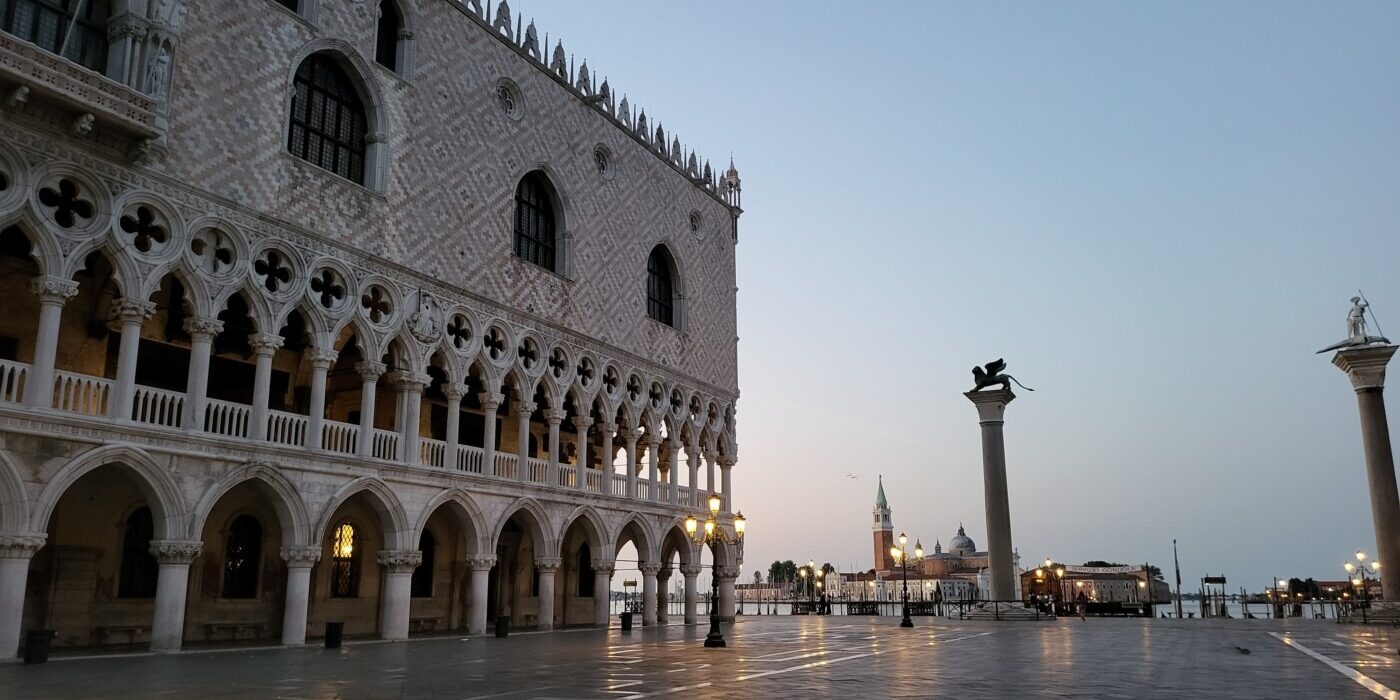A student’s guide to Venice
Venice, the historic island city. Rarely out of the news, whether it be for cruise ships, corruption, or climate change, it remains a bucket list destination, and one which the university’s AISP modules allow you to explore. Whilst many are rightly wary of Venice’s proclivity to turn the unsuspecting tourist into a pauper, this needn’t be the case. Plan your visit well, avoid the classic tourist traps except where strictly necessary, and the city can be a great place to visit as a student. Just remember to bring mosquito repellent – they’re everywhere and the pharmacies price accordingly!
As the confluence for trade between the empires of the Eastern and Western worlds for much of the previous millennia, Venice has a rich cultural scene to explore. Whilst access to a few galleries and museums has become slightly more expensive for students due to the UK’s departure from the EU, most places still offer compelling student discounts on presentation of an ID card. Highlights include the Palazzo Ducale – the former palace of the Doge of Venice. Contained within is an art gallery, with both contemporary and modern exhibitions on show, and all for the price of a plate of pasta. Upgrade your ticket for another couple of Euros, and you now have access to 10 museums scattered throughout Venice, including the charming natural history museum, and the Museo Correr, a cartographer’s dream.
The Biennale shines brightest, however, at its satellite sites
For the art aficionado, the Biennale di Venezia is a must. Running annually since 1895, and as such the oldest exhibition of its kind, the Biennale alternates between art and architecture. The main fair runs over two sites; the capacious and characterful ex-shipbuilding site of the Arsenale, and the Biennale Gardens. Situated within each is an expo of art, with representation from over 75 countries, ranging from more traditional oil-on-canvas, to the post-modern. The two sites combine to form a huge undertaking, and visiting both on separate days is recommended to avoid a complete burnout.
The Biennale shines brightest, however, at its satellite sites. Scattered across the city, these venues are, unlike the main campus, free to enter, and provide a more intimate experience, away from the crowds of the expo. For the classicists, Venice is also a hub of renaissance art, with a plethora of collections across the city.
As one might expect in a city that counts twice as many tourists as residents, there is no shortage of restaurants to indulge in. Whilst trying to find somewhere to eat, the usual rules apply: avoid the streets around the main tourist attractions, do your research beforehand, and steer clear of the ‘convenient’ locations. Follow these, and Venice’s expansive food scene may surprise you. Head down to the old Jewish Ghetto for authentic cuisine or wander along the back streets of the Rialto market for the catch of the day. On a longer stay or just trying to save some cash? There’s a myriad of ‘city’ supermarkets, including possibly the most elegant ‘Spar’ you’ll ever visit, situated inside an old gothic movie theatre.
World class art, entertainment, and history are never more than a few bridges away
For those who enjoy an evening out, Venice is an accommodating city. Whilst there are no traditional nightclubs on the island – noise restrictions put paid to any late-night frivolities – Padua, a student city, is just over 20 minutes away by train. Aperol Spritz is the cocktail of choice, and takeaway versions can be found for two Euro or fewer. On the topic of drinks, Venice is a particularly warm and humid city, and dehydration is a real possibility. Bring a reusable bottle or two, as they can be refilled for free at numerous water fountains across the city.
Whilst I would recommend walking around the city – the furthest extremities are no more than an hour apart – a Vaporetto pass (the local water taxi) is needed to get to the outlying islands. A generous age-based discount is available on the three-day pass and allows you to explore the gems of Murano and Burano, and the beach resort of Lido, amongst others.
Whether you’re there for just a few days, or a week or more, Venice is a city that continues to delight. Simply wandering the quaint back streets, gelato in hand and away from the hustle and bustle, is a gratifying way to spend an afternoon. Tire of that, and world class art, entertainment, and history are never more than a few bridges away. Plan well to avoid the obvious pitfalls, and you have a city that lives up to its nickname of “La Serenissima” – the most serene.

Comments